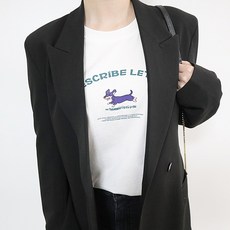Did you know that just like humans, puppies can experience anxiety when left alone, often leading to destructive behavior? Understanding how to train your puppy to be independent is crucial for their well-being and your peace of mind.
Historical Background of Training Your Puppy to Be Alone
The Early Days of Dog Ownership
Historically, dogs were bred for specific tasks such as herding, guarding, and hunting. These roles often required them to operate independently for periods, especially when left to manage livestock or patrol property. However, as dogs became more integrated into families as companions, the need to train them to cope with solitude emerged. Early dog training focused on building bonds between humans and dogs but often overlooked the aspects of teaching dogs to be comfortable alone.
Understanding Canine Behavior
Studies in the late 20th century began to shine a light on canine behavior, particularly in relation to separation anxiety. Researchers discovered that many dogs struggle with loneliness, calling for a shift in training techniques to accommodate the emotional needs of dogs. This led to the development of modern training methods designed to help puppies and dogs become more independent, thus enhancing their ability to cope when left alone.
Current Trends and Statistics Related to Training Your Puppy to Be Alone
Rising Popularity of Independent Training Methods
In recent years, training techniques focusing on independence have gained traction among pet owners. The demand for these strategies has risen, influenced by lifestyle changes that see pet owners returning to work or spending time away from home. Surveys indicate that approximately 50% of dog owners report issues with separation anxiety, emphasizing the need for effective alone time training.
The Impact of Technology
The rise of technology also plays a significant role in training trends. Smart pet products, such as interactive cameras and treat dispensers, allow owners to engage with their pets remotely. These technological innovations not only provide entertainment for the puppy but also facilitate training sessions, enabling owners to encourage independence even when they are away.
Practical Tips for Training Your Puppy to Be Alone
Gradual Desensitization
One effective technique for teaching your puppy to be comfortable alone is gradual desensitization. Start by leaving your puppy alone for short periods, gradually increasing the duration as they grow more accustomed to being alone. Always return before they show signs of anxiety. This approach helps build confidence, reassuring your puppy that you will return, thereby reducing their anxiety when you’re actually away.
Positive Reinforcement
Using positive reinforcement methods can drastically improve your puppy’s experience of being alone. Whenever you leave your puppy alone and they remain calm, reward them with treats and praise. This practice creates a positive association with alone time, making your puppy more inclined to settle down when left by themselves.
Future Predictions on Training Your Puppy to Be Alone
Emergence of New Training Technologies
As our understanding of canine psychology evolves, we can expect more advanced training technologies to emerge. Virtual reality (VR) and augmented reality (AR) tools could soon become commonplace, offering immersive experiences for puppies to practice being alone in a controlled environment. Such innovations could further ease the transition for both dogs and their owners.
Personalized Training Solutions
The future of puppy independence training may also focus on personalization, with tailored training programs based on a dog’s breed, temperament, and past experiences. Data collection and analysis could allow for highly specific training regimens, providing customized approaches that cater to the unique need of each puppy, ensuring they adapt to alone time more effectively.
Final Thoughts on Training Your PUPPY to Be Alone
Training your puppy to be alone is an essential skill that fosters independence, reduces anxiety, and builds a strong foundation for a happy pet-owner relationship. By gradually acclimating your puppy to solitude and using positive reinforcement, you can ensure they feel safe and secure when left alone. Remember, patience and consistency are key to successful training.
Further Reading and Resources
-
ASPCA – Separation Anxiety in Dogs: This resource offers insights into identifying and managing separation anxiety in dogs, including effective training techniques. It’s valuable for understanding the broader issues related to leaving your puppy alone.
-
American Kennel Club (AKC) – Crate Training: This guide provides helpful tips on crate training, a crucial aspect of teaching your puppy to be alone. It emphasizes how a properly introduced crate can create a safe space for your puppy.
-
Zoetis Petcare – Puppy Behavior Development: This article discusses various stages of puppy development and how to adapt your training methods according to their growth. It’s important for tailoring your approach to a puppy’s age and temperament.
-
Puppy Training Academy – Online Courses: An educational platform offering various courses specifically for puppy training, including sessions on crate training and alone time desensitization. It’s a great way to get structured guidance.
-
Humane Society – Tips for Training Puppies: This resource outlines essential training tips for first-time puppy owners and covers essential behaviors, including how to teach your puppy to be comfortable alone. It offers a comprehensive overview critical for new pet parents.






